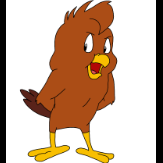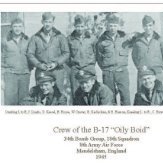
EPinniger
LSP_Members-
Posts
121 -
Joined
-
Last visited
About EPinniger
- Birthday 02/09/1979
Contact Methods
-
Website URL
http://
Profile Information
-
Gender
Male
-
Location
Cookham, Berkshire, UK
Recent Profile Visitors
871 profile views
-
I don't think I've posted in this thread before, but your scratchbuilding work is amazing! It just shows what can be done with skill, styrene and spares-box parts. Great work!
-
Both looking good! I've just started mine (for the Box Stock GB) - will post some photos in a day or so. This kit certainly goes together well and has plenty of detail, though weighting the nose is a tricky job. I ended up adding some extra weight behind the seat in the cockpit.
-
Looks like you've made a good job on the cockpit so far! Looking forward to seeing more of this, I also have the Sparrowhawk kit, though I decided on the Hasegawa BF2C-1 instead for this GB as it's a less challenging build. Are you still in need of photos, drawings or other reference material? I'm sure I have some photos + colour profiles of the Sparrowhawk somewhere in my book + magazine collection.
-
This is a great idea! When you've finished it, maybe you could try building a RFC Moth from "Aces High"; they actually used Stampes in this film to represent SE5As in the flying sequences, but the Moth looks very similar, particularly when painted in WW1 RFC colours! This should work out OK if you can find decals of the right size - especially since the model is representing a "film prop" rather than a real WW1 plane. I've done the same for a few of my 1/48 WW1 builds, before I found some cheap aftermarket sheets of WW1 crosses. One other tip - Aeroclub (British manufacturer) are a good source of excellent aftermarket 1/32 WW1 guns if you don't want to use PE. They're cast white metal, and cost about £1.50 per gun. I know they have a Parabellum, Spandau, Vickers and Lewis in their 1/32 range, not sure what else.
-
Great work with the scratchbuilt cockpit detail! I also have this kit (also an ancient Matchbox example, not a Revell reissue) and will keep a note of your build for when I start mine. Some light metallic chipping/scuffing would add a lot to the appearance. The black paint on RAF cockpits of this era (particularly on the seats + floor) tended to get worn + battered after a while; most museum examples have very worn cockpit paint, although for an aircraft which has only been in service a few years you'd need to tone down the effect a bit!
-
Very nice work! You did a very neat job on the painting + rigging. One question, what are the square objects on the rear fuselage? Lights? This is definitely a kit I'll be keeping a look out for in future!
-
£79.99 isn't a bad price at all... not much more than what Trumpeter charge for their 1/24 single-engine kits! I probably won't be buying this one, though - I already have a 1/32 Mosquito kit awaiting construction (and a second-hand scrap built model to rebuild) and have more or less settled on 1/18 as a "larger than 1/32" scale (Not much chance chance of getting a Mossie in 1/18 - and I wouldn't have room for it even if there was one! 1/32 is more than big enough). The 1/24 Gloster Gladiator is another matter... anyone know if this one is confirmed or just a rumour?
-
Looks very nice! Very neat paint job on the airframe. You're making great progress, it looks like you build + paint even faster than I do! This is a kit I'd definitely like to add to my collection, I already have a 1/48 kit of this aircraft. Am I correct that this is the type codenamed "Willow" by the Allies?
-
I should have the BF2C finished within a month, hopefully, so there should be plenty of time left. I have a number of other projects (not 1/32 planes) on the workbench so don't really want to start another!
-
I'll definitely be joining this GB - with either the Hasegawa Ki-84 "Frank" or the Revell He162 - once I've finished the Curtiss BF2C for the Carrier GB.
-
What are the two ship hulls in the background? (Are these another Mastercasters project?)
-
Date for USAAF/USN introduction of Interior Green?
EPinniger replied to EPinniger's topic in Aviation Discussion & Research
Thanks very much for the link! Interesting reading, and a very useful reference for modelling - I've saved all 3 pages to my PC, and will print them out later. This paragraph, from the third section, answers my question: BTW, I'm not hugely bothered by getting the interior paint colour exactly right - I don't think any of the paints I have are exact matches for the historic colours, in any case - but the difference between aluminium lacquer (thanks for the correction, D Bellis - though the difference between this and NM isn't much from the model painting point of view) and green paint is fairly fundamental! -
At what date did Interior and/or Bronze Green start to become the standard for (most) US military aircraft cockpit interiors? Instructions for some 1930s aircraft kits specify natural metal as the cockpit colour, others specify Interior Green (including the Curtiss BF2C-1 I'll be starting shortly). I'm inclined to think that it should be natural metal instead, but since it's a late 1930s aircraft, I could be wrong. All the reference material I have relates to 1941 and later. Does anyone know the answer to this?
-
Looks great! Certainly more than worthy of a museum display. What paint did you use for the bluish-green shade of the fuselage? This model - and your restored P-40 - show that even the oldest aircraft kit with minimal "aftermarket" can still look great when painted, finished + weathered to a good standard! One other question - did you rescribe the panel lines, or did the kit already have recessed lines? I know a lot of the old Revell 1/32 kits do, on the larger airframe parts at least.
-
From a brief look in the box, it looks like the rear fuselage has raised rivets (and recessed panel lines) whilst the forward fuselage has sunken rivets. Anyway, I'll take some photos of the kit parts tomorrow and post them here.



